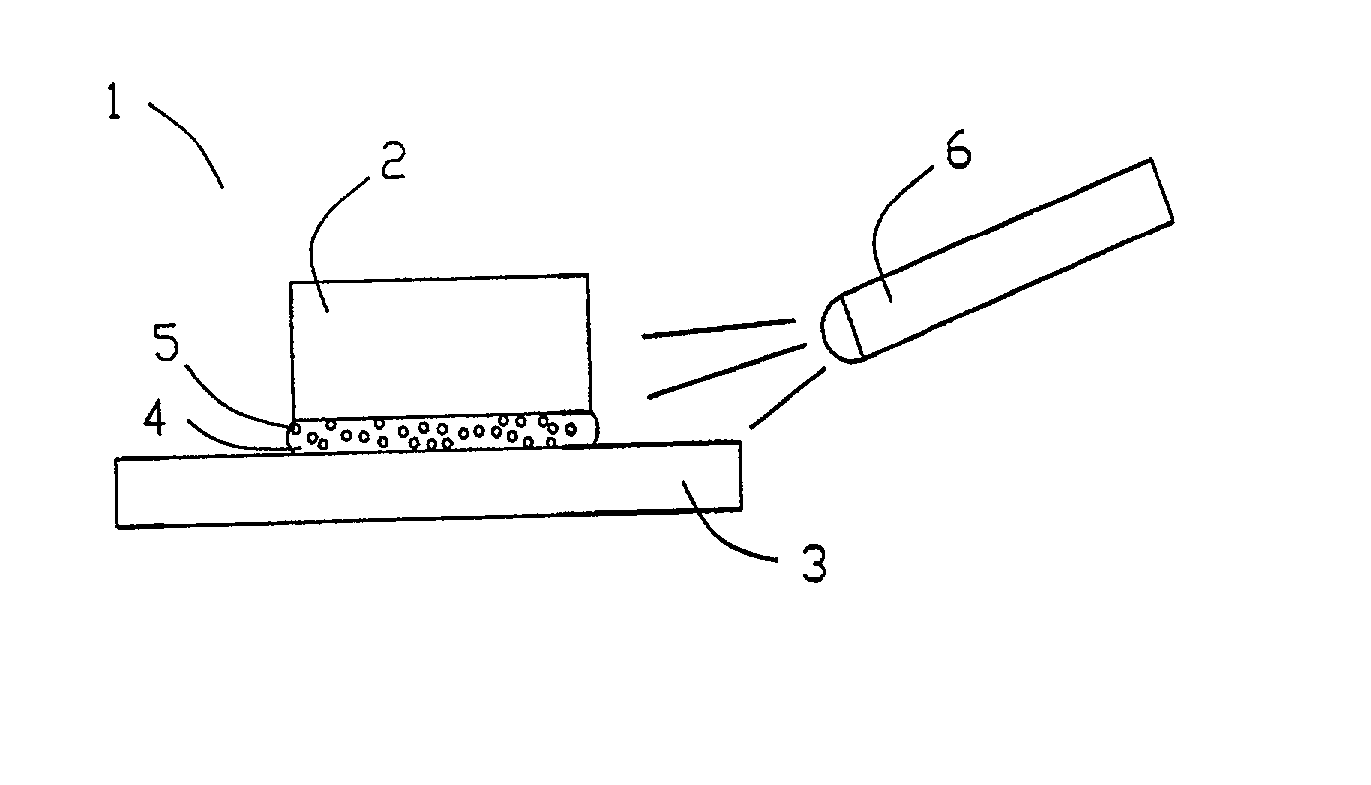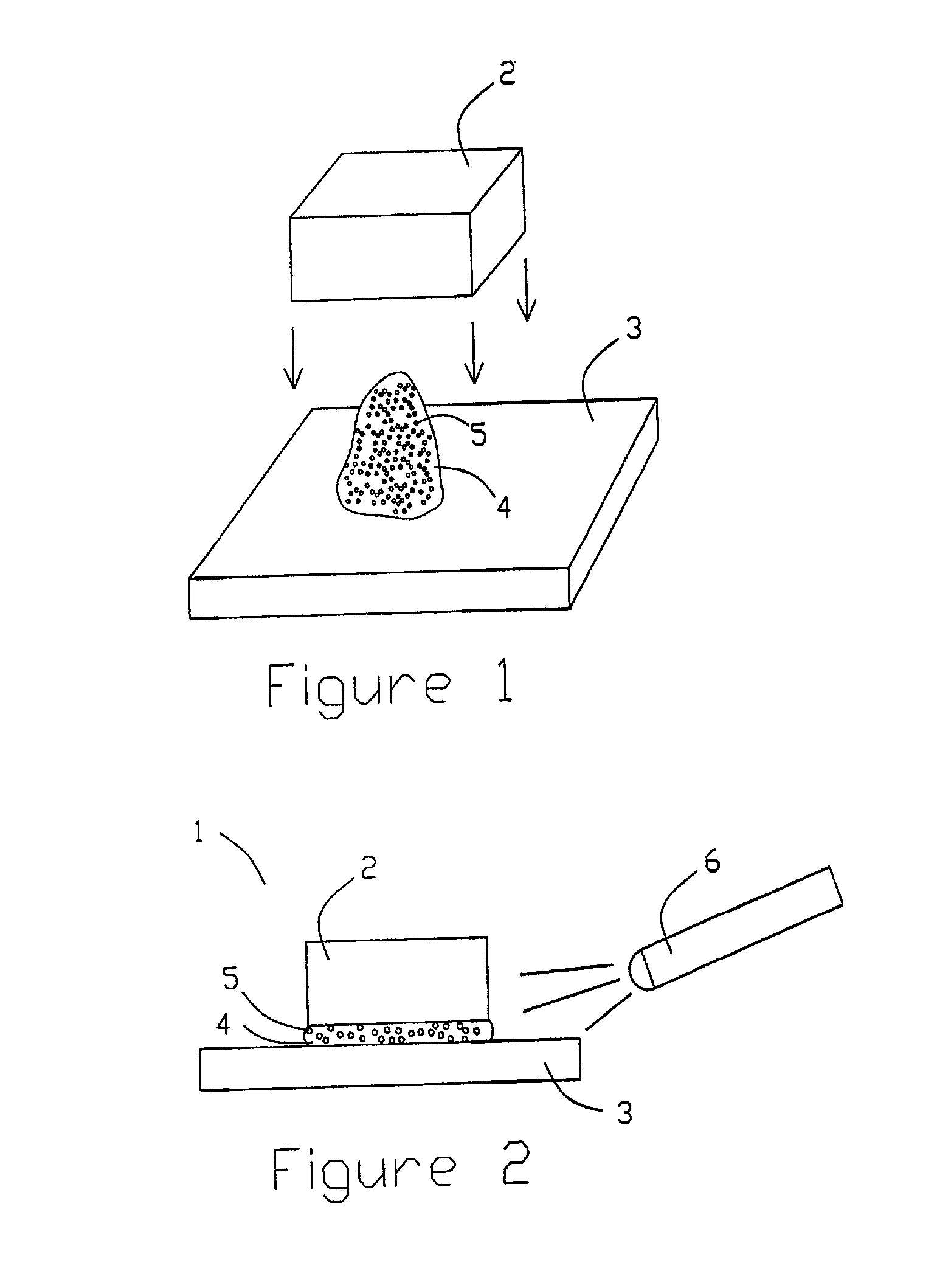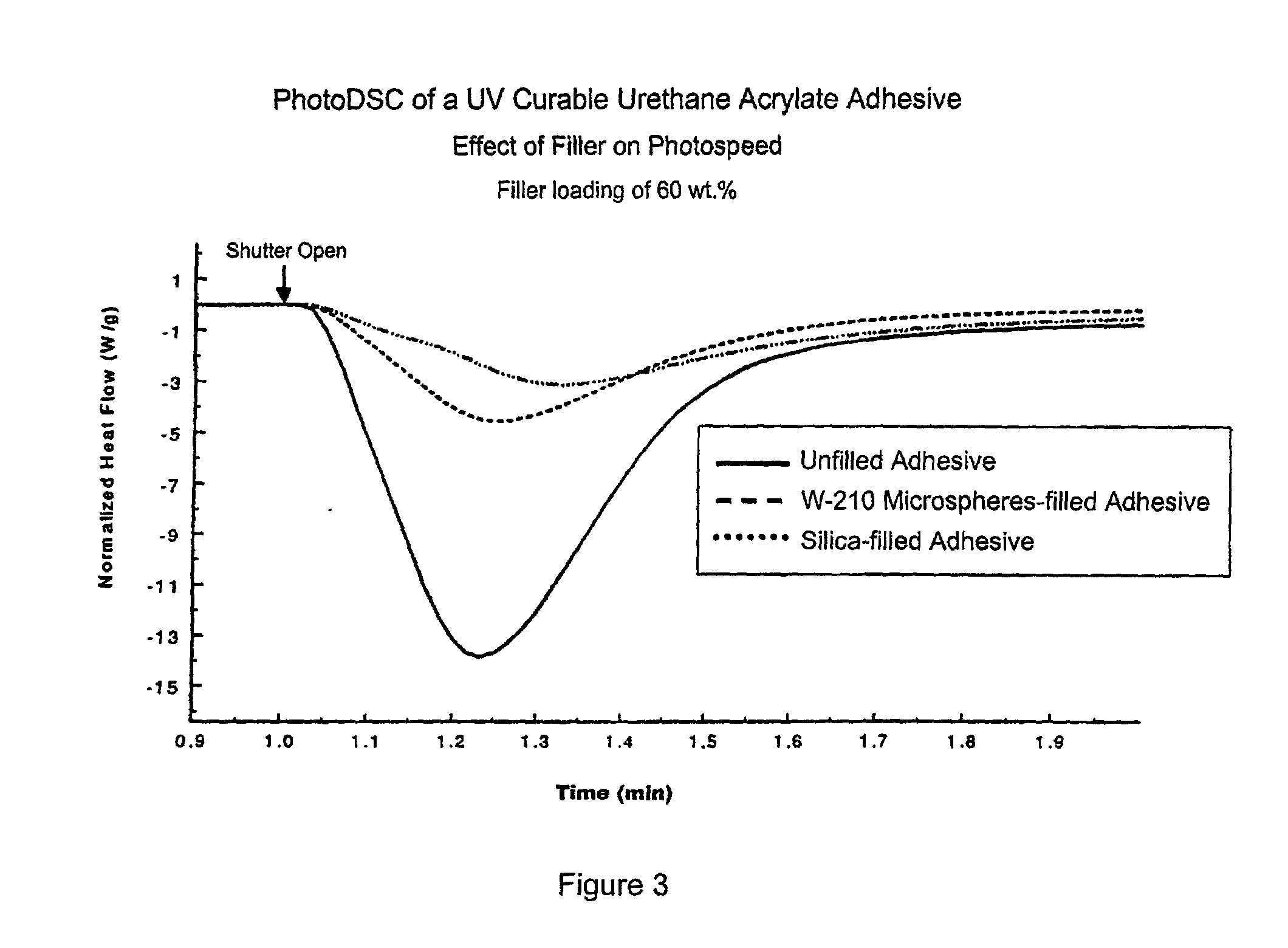UV curable adhesives containing ceramic microspheres
a curable adhesive and ceramic microsphere technology, applied in the direction of film/foil adhesives, non-macromolecular adhesive additives, chemistry apparatuses and processes, etc., can solve the problems of reducing the photocure rate of the preferred ultraviolet curable adhesive, reducing the photocure rate of the photocurable adhesive, and reducing the fabrication cycle time of optical sub-assembly. , the effect of significantly increasing the fabrication process
- Summary
- Abstract
- Description
- Claims
- Application Information
AI Technical Summary
Benefits of technology
Problems solved by technology
Method used
Image
Examples
Embodiment Construction
contained 62.78 wt. % W-210 grade white ZEEOSPHERES.RTM. ceramic microspheres as the modifier. In each case, the adhesive was the Dymax 6-628 gel adhesive described above. The UV radiation source was a Novacure.RTM. spot curing unit which developed an irradiance, i.e., an incident radiant energy flux per unit area, of 4500 mW / cm.sup.2. Samples of each adhesive were dispensed onto a circular plastic assembly to approximately the same height and width, fixtured within the interior of a 10 mm inner diameter light ring, and subjected to various UV radiation doses as tabulated below. The dose was varied by adjusting the time of exposure to the UV source. For example, doses of 45 J / cm.sup.2, 67 J / cm.sup.2, 90 J / cm.sup.2, and 112 J / cm.sup.2 resulted from exposure times of 10 sec, 15 sec, 20 sec, and 25 sec, respectively. Following exposure, samples of each cured adhesive composition were excised from the plastic assembly and subjected to thermal analysis via differential scanning calorimet...
PUM
| Property | Measurement | Unit |
|---|---|---|
| Fraction | aaaaa | aaaaa |
| Fraction | aaaaa | aaaaa |
| Force | aaaaa | aaaaa |
Abstract
Description
Claims
Application Information
 Login to View More
Login to View More - R&D
- Intellectual Property
- Life Sciences
- Materials
- Tech Scout
- Unparalleled Data Quality
- Higher Quality Content
- 60% Fewer Hallucinations
Browse by: Latest US Patents, China's latest patents, Technical Efficacy Thesaurus, Application Domain, Technology Topic, Popular Technical Reports.
© 2025 PatSnap. All rights reserved.Legal|Privacy policy|Modern Slavery Act Transparency Statement|Sitemap|About US| Contact US: help@patsnap.com



